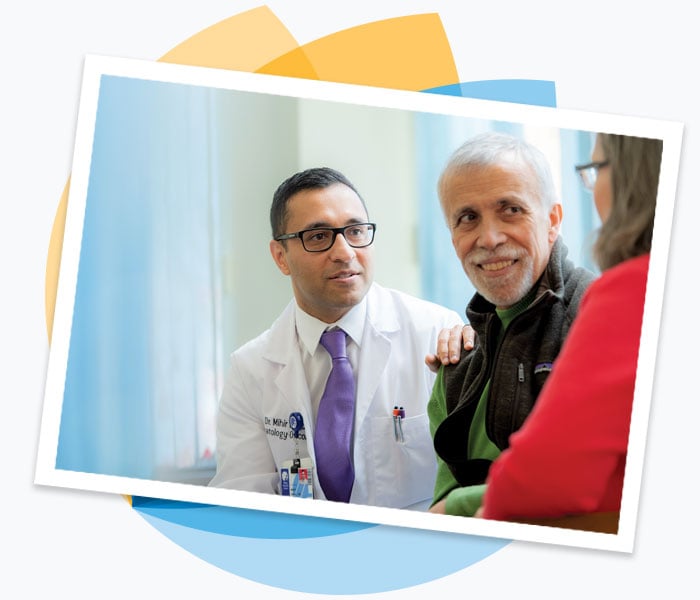Non-Hodgkin Lymphoma
Non-Hodgkin lymphoma consists of about 60 different subtypes. The most common type, accounting for about 90% of all new cases, starts in the B-cell lymphocytes.

A lymphocyte is a type of immune cell made in the bone marrow that moves into the lymph system where it fights foreign bodies like bacteria and viruses. B-cells primarily help fight off infections. T-cell lymphocytes are the other type of cell where about 10% of non-Hodgkin lymphomas start. The T-cells help the B-cells make antibodies.
The subtypes of non-Hodgkin lymphoma are based on which type of cell the lymphoma started in, how the lymphoma cells look, their genetic makeup, and whether there are proteins present on the surface of the cells. The two most common subtypes are
- Diffuse large B-cell lymphoma
- Follicular lymphoma
Because lymphatic tissue is in many parts of the body, non-Hodgkin lymphoma can start almost anywhere but is usually first found in a lymph node.
How Quickly Does Non-Hodgkin Lymphoma Grow?
Lymphomas are grouped by how quickly they are likely to grow:
- Indolent (also called low-grade) lymphomas grow slowly. They tend to cause few symptoms. Follicular lymphoma is the most common indolent non-Hodgkin lymphoma.
- Aggressive (also called intermediate-grade and high-grade) lymphomas grow and spread more quickly. They tend to cause severe symptoms. Diffuse large B-cell lymphoma is usually aggressive. Over time, many indolent lymphomas become aggressive lymphomas.
Who Treats Non-Hodgkin Lymphoma?
Many patients are diagnosed with lymphoma by a hematologist. This type of doctor specializes in blood disorders, including blood cancers. In many cases the person who diagnosed it will also create the treatment plan. That’s because hematologists are also oncologists.
If you received a non-Hodgkin lymphoma diagnosis and you’d like a second opinion on the treatment options as well as potential clinical research trials available to you, request an appointment with one of our hematologists in the Capital District.
More About Non Hodgkin Lymphoma
Our cancer treatment services are delivered in a non-hospital setting at locations in the Albany, Amsterdam, Hudson, Troy, and Saratoga areas. Each cancer center is designed for your convenience with free parking and ground floor access for easy patient pickup and drop-off.
Non-Hodgkin Lymphoma Signs & Symptoms
Because lymphoma affects the lymph system, swollen lymph nodes that don’t go back to normal on their own is a common symptom. But there are other warning signs and symptoms too, depending on both the type and location of the disease.
Non-Hodgkin Lymphoma Staging
Staging of non-Hodgkin lymphoma is different from most other cancer stages. The Lugano Classification System is the most common way of staging NHL today. This includes Stages I-IV as well as an indication of whether the lymphoma has affected an organ that’s outside of the lymph system. For these patients, the letter E is added to their stage note there is “extranodal organ involvement.”
Non-Hodgkin Lymphoma Treatment Options
Not every lymphoma patient needs to begin treatment immediately. When the time is right to start treatment one or more therapies commonly used for lymphomas may be recommended including: chemotherapy, immunotherapy, targeted therapy and/or radiation therapy. Bone marrow transplants are also a treatment option for some patients.